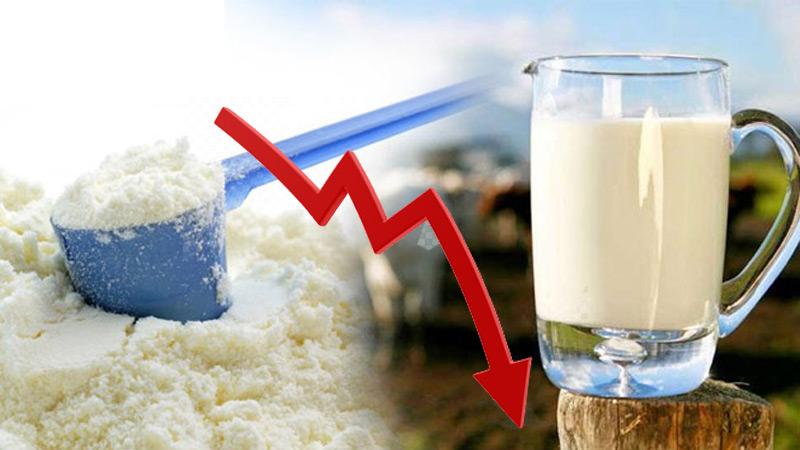Powdered milk, also known as dry milk, is a dairy product that has undergone a dehydration process to remove moisture, resulting in a fine powder. It is a popular choice for various purposes, from emergency food storage to a convenient alternative to fresh milk. In this article, we will explore the advantages and disadvantages of powdered milk, shedding light on the various aspects of this dairy product.
Advantages and Disadvantages of Powdered Milk
Advantages of Powdered Milk
Long Shelf Life
Among the myriad pantry staples, powdered milk’s exceptional durability shines bright; when kept in a cool, dry sanctuary, it defies the passage of time, securing its spot as the ultimate emergency sustenance, providing a lifeline when the well of fresh milk runs dry.
Convenience
Dehydrated milk offers unparalleled convenience; no refrigeration is necessary until you mix it with water, making it an ideal companion for outdoor adventures like camping, hiking, and other scenarios without cooling facilities. Its lightweight quality also renders it a top pick for backpackers and globetrotters.
Versatility
Powdered milk plays a multifaceted role in the realm of cuisine, establishing itself as an essential ingredient in the realm of baking, where it contributes to the production of bread, pastries, and cakes. Furthermore, it assumes a crucial function in the preparation of yogurt, ice cream, and an array of flavourful sauces. For those who relish swift coffee indulgences such as instant cappuccinos or lattes, powdered milk often serves as the perfect creamy complement in their coffee mug.
Cost-Effective
In the realm of dairy options, powdered milk reigns as a pocket-friendly champion, boasting affordability that can make a considerable dent in the expenses of milk-loving households, particularly when purchased in generous quantities.
Nutritional Value
Dehydrated dairy preserves a wealth of the vital nutritional components present in unprocessed milk, offering a rich supply of imperative elements like calcium, vitamin D, and protein; indeed, certain powdered milk variants are even enriched with extra vitamins and minerals, rendering it a prudent selection for the health-conscious consumer.
Disadvantages of Powdered Milk
Altered Flavour and Texture
One of the primary Powdered milk’s diminished taste and texture compared to fresh milk often leave consumers longing for the real thing.is that it often has a different taste and texture compared to fresh milk. While some people might not notice a significant difference, others may find it less appealing. This alteration in flavour and texture can impact the overall taste of dishes prepared with powdered milk.
Reconstitution Challenges
Combining powdered milk with water demands precision to attain the perfect texture, as mishandling can lead to a milk that either tastes diluted or possesses an undesirable graininess, making the art of achieving the ideal consistency a delicate dance of experimentation and patience.

Limited Flavour Options
Powdered milk typically comes in one basic flavour – regular milk. Unlike fresh milk, it lacks the variety of options such as whole, skim, or flavoured varieties. This limitation may not satisfy the preferences of those who enjoy different milk flavours or fat content choices.
Possible Nutrient Loss
The dehydration process used to produce powdered milk may result in some nutrient loss, particularly heat-sensitive vitamins like vitamin C and certain B vitamins. While powdered milk is still a good source of essential nutrients, it may not be as nutritionally rich as fresh milk.
Environmental Concerns
The production of powdered milk can have environmental consequences, particularly in regions with intensive dairy farming. The process involves energy consumption for dehydration and packaging, which can contribute to a larger carbon footprint compared to locally sourced fresh milk. Additionally, some powdered milk brands may use excess packaging materials, leading to more waste.
Conclusion
Powdered milk is a versatile and cost-effective dairy product with several advantages, including a long shelf life, convenience, versatility in cooking, cost savings, and nutritional value. Balancing the convenience of freeze-dried food with its drawbacks, one must consider altered flavour and texture, reconstitution challenges, a restricted array of flavours, potential nutrient depletion, and environmental implications. The decision to use powdered milk or fresh milk depends on individual preferences, dietary needs, and specific circumstances. While powdered milk offers undeniable advantages in terms of convenience and shelf life, some may still prefer the taste and nutritional richness of fresh milk. Ultimately, the choice between powdered milk and fresh milk comes down to personal priorities and the intended use.
Read more : Top 10 Health Benefits of Drinking Lemon Water
Read more.. 10 Essential Health Tips for a Balanced Lifestyle

